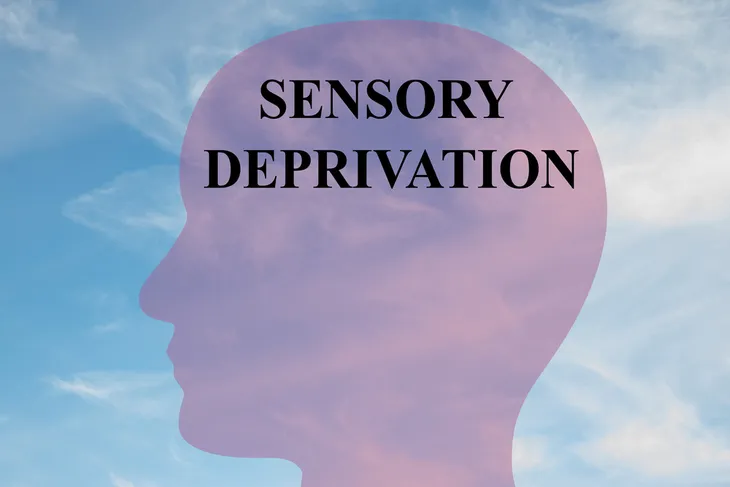Is the thought of sealing yourself in a pitch-black chamber with no sound appealing to you? It is for a growing number of Americans, and it can have physical and mental benefits as reported by those who have tried it (including this author).
Float therapy – or sensory deprivation therapy – involves laying in water that’s filled with salt so you float on the surface. Then you pop in the earplugs, lower yourself in, and lose yourself in the void. Here are seven things to know if you’re thinking about trying this type of therapy…
1. You Might Hallucinate
Some people who try float therapy report having hallucinations, despite the fact there’s no light whatsoever. But the mind may try to fill the emptiness with something, and you could see colors or floating shapes that aren’t really there.
You might also hear things that aren’t there – for example, this author heard some dripping water (from where?), and others have heard phantom music (like this writer for Mental Floss recounts).
2. You Can Lose Sense of Time
Typically, a float session lasts an hour (but can be shorter or longer). However, when you’re floating in darkness with no reference points and no smartphone to check, you can quickly lose sense of time.
That means your 60-minute session can end up feeling like 15-minutes, even when you’re sure you didn’t drift off to sleep during the session. “In a float tank, you lose all sense of time. A minute can feel like an hour, and vice-versa,” says a writer for Slate.com.
3. The Salts Have Healthful Properties
We don’t mean to say that the salts in the temperature-controlled water will heal a gaping leg wound or cure cancer, but as the SpaWeek blog points out, the salt can “provide exfoliation and restore moisture and electrolytes to the skin.”
Epsom salts are also filled with magnesium, which is best absorbed through the skin (according to the source) and can provide benefits such as lowered stress and improved sleep.
4. It Can Help Combat Chronic Pain
PainDoctor.com notes that float tanks may be a good approach to controlling chronic pain. In fact, the source talks about benefits for fibromyalgia patients in particular – a condition that is characterized by severe pain, fatigue, mood swings, and sleep problems.
The source mentions something called the Fibromyalgia Floatation Project (FFP), which believes “that spending an hour in a float tank will help sufferers reduce pain significantly.” The float apparently achieves pain relief by encouraging relaxation as well as hormone production, including the “feel good” hormone called dopamine.
5. It Can Turn Off Fight-or-Flight Responses
Anxiety is due largely in part to your brain’s “fight or flight” response, which is controlled by the amygdala, explains Time.com. The article notes a research team is looking into how floating actually impacts anxiety, and although in its early stages, the team is finding “that floating tamps down anxiety in the brain in a way that rivals some prescription drugs and meditation.”
The research split a group in two, with 1-half getting 90-minutes of float therapy and the other half getting the same amount of time in a relaxing reclining chair. “Essentially what we found in the preliminary data is that the amygdala is shutting off post-float,” notes the team lead.
6. It’s a Stepping Stone to Meditation
Many people are trying meditation as a way to handle their stress and worries, although it’s easy to become distracted and start thinking about a noise in the room or what groceries you need to pick up on your way home.
FeelRegenerated.com explains “(many) regular floaters compare floating to being the training wheels for meditation.” It removes all external stimuli, letting your mind be nowhere but in the moment. While you will likely still have random thoughts you’re accustomed to during the first few floats, those will likely start to float away when you’re not attached to your phone and allow yourself to be present in the moment – which may take more than a few sessions.
7. Float Therapy is Not a New Concept
Some people may see float therapy as trendy, but as Elevation Float in Australia points out, an American neurophysiologist named Dr. John C. Lilly conceived the concept of a flotation tank in 1954. “He began experimenting on the possible effects the environment can produce on human consciousness if the body is deprived of these sensory stimulations,” it notes.
While some of these early “isolation tanks” look quite terrifying, and perhaps something you’d see in a 1950’s sci-fi film, the modern versions can be actually quite large (and easy to step into), it adds. They are also designed with filtration devices to keep them sanitary.










